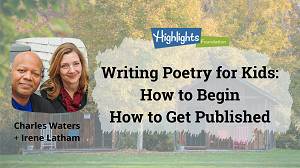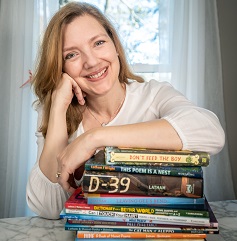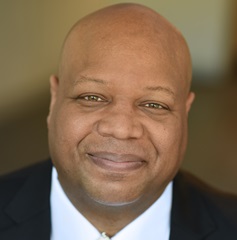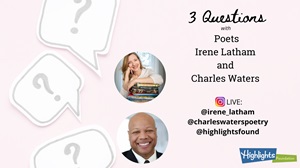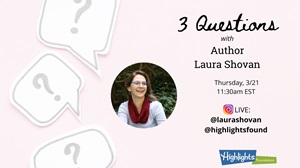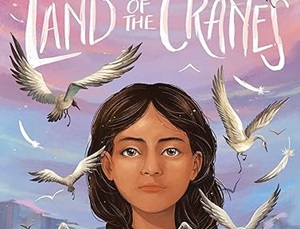We’d like to address two questions we get asked A LOT. As you read our answers, we hope you’ll recognize there is no one path to publication. Each journey is different, and that’s a good thing! But there are some universal truths, too. Read on!
How did you first get published in the world of children’s poetry?
Irene: By the time my debut novel for children LEAVING GEE’S BEND (Penguin, 2010), was released, I’d been studying poetry for adults for a number of years and already had a slew of poems published in adult literary journals, a chapbook (winner of a chapbook contest), and a full-length collection (from a small press) under my belt.
It hadn’t occurred to me to write poetry for the children’s market, I think, for two reasons: 1. my adult poetry focused on (romantic) love, loss and longing, and 2. I thought all children’s poetry was Shel Silverstein and Dr. Seuss.
Enter friend/poet/all-around amazing person Robyn Hood Black, who, as part of her duties for our local SCBWI chapter, arranged a children’s poetry retreat with Rebecca Kai Dotlich. At first I was like: what can I possibly learn at this event? (Arrogant, yes?) And then I thought: well, it would be fun to hang around with poetry folks for the weekend….in my experience, the poetry crowd may be small in number, but no group is more passionate about words!
So I went! And I learned about a billion things, the most important of which was: No, in fact, all children’s poetry is NOT Shel Silverstein and Dr. Seuss. I can write—and publish— poems about love, loss and longing, just from the child-me, not the adult-me.
Truly, that is the key to writing poetry for children: connecting with the child who still lives inside each of us—that child who wonders about things and finds delight and makes fresh, tender, sometimes funny, sometimes startling associations. I don’t know about you, but this is my favorite brain-space! What a marvelous way of looking at and walking about in the world!
About a year later I sold my first poem in the children’s market, to Lauren Tarshis at Scholastic’s Storyworks magazine. (The details are fuzzy, but I believe Lauren and I met at NCTE, and I told her I was trying to break into the market, and she gave me her card.) The poem is called “Ship Spies a Light” and it’s a persona poem in the voice of a shipwreck.
What a happy day! Getting paid to write what I love!
I went on to write quite a few poems for Scholastic’s various magazines, and I also got my agent Rosemary Stimola (who had signed me as a middle grade fiction writer) on board to help me sell some poetry picture books. After a few failed manuscripts, we had a winner with DEAR WANDERING WILDEBEEST: AND OTHER POEMS FORM THE WATER HOLE (Lerner, 2014). I’m so grateful to editor Carol Hinz for seeing something in my writing and giving me a chance. That book garnered some lovely accolades, and I’ve been able to work with Carol on a number of poetry projects since then, including several titles with Charles.
Charles: As I’ve written about in a previous blog post, it was working for Poetry Alive! that started my poetic journey. I’m glad it started in an actor way, since I was a professional actor first before becoming a professional writer. The application of learning poems, sussing them out, finding clues in the text, helped them “drop in” into my body and soul when performing them. That same application I take to writing as well, in so far as reading the words aloud, making sure – to the best of my ability – that they sound right, if there’s a flow to them, and spotting places where something doesn’t make sense or gets too wonky. If you haven’t already I encourage you to always read your poems aloud at some point in your process.
Attending the SCBWI (Society of Children’s Books Writers and Illustrators) conference in Lake Buena Vista, FL in 2007 was a game changer for me. I took a day-long seminar with the noted anthologist and author Lee Bennett Hopkins, as well as Kristin Rens, Executive editor of picture books, middle grade, and YA at Balzer + Bray / HarperCollins.
What this did to me – and other attendees – was to get us into a non-judgmental space with industry professionals to not only learn from them about the ins and outs of creativity and the book business overall, but take them up on their offer to send them some of our poems. One thing they said – among others – that sticks with me today is when it comes to ideas and projects to “think outside the box.”
I sent Kristin a proposal, which was turned down in the kindest, most encouraging way possible, and I sent Lee some poems of mine, most of which he did not like except one, which was encouraging. The key was I started learning about rejection in the book industry. I know a lot about that as a professional actor, and I met two people who were in the industry and they now knew who I was, too.
A few years – and many rejections to other publications later – out of the blue Lee asked me to submit a poem for his book AMAZING PLACES, that poem “Fenway Park” and especially getting into the Poetry Friday Anthology series edited by Sylvia Vardell and Janet Wong helped me get known not only to readers but topeople in the children’s poetry business.
The “Fenway Park” poem stands out for the fact that I wrote 100 drafts of the poem to get it right, not only for Lee but for the editor at Lee and Low Books which was publishing the AMAZING PLACES book. This poem is where I really became a writer. I later found out that Lee was going to fire me from the project due to not being happy with what I was sending. Thank goodness for his best friend, and my poetry mentor, Rebecca Kai Dotlich, who — unbeknownst to me at the time – convinced him to keep me on and offered to help, which she did, offering advice on rhythm and flow, getting rid of extraneous words, honing in on what I was really trying to say.
Getting that poem published – in a Lee Bennett Hopkins anthology no less – was one of the deepest joys of my professional life.
While making your poetic journey – or any journey in fact – it’s important for someone to have your back. This is what Irene and I hope to accomplish for you at the Highlights workshop.
Getting into multiple anthologies led to Irene thinking of me for a book project Carol Hinz, Associate Publisher of Millbrook Press and Carolrhoda Books, imprints of Lerner Publishing Group, had come up with and reached out to Irene about which became the book CAN I TOUCH YOUR HAIR? POEMS OF RACE, MISTAKES AND FRIENDSHIP. This book also helped pave the way for me to be signed on by Rosemary Stimola as my literary agent.
What advice do you have for children’s poets just starting out?
Charles: You keep building things in small pieces, one poem at a time, get yourself out there, by going to conferences, and online, too. In my case I created a Youtube channel where I perform over 130 of my own poems and share them with educators, editors and young people.
Taking the long road without shortcuts and taking full advantage of opportunities that are presented has held me in good stead so far, and I hope the same can be said for you as you start or continue your poem making journey.
Irene: If there’s a poetry event being offered, GO. Tell people you’re trying to break into the market; you never know where it might lead! Write from the child-you…whether that’s something funny or tender, aim for wonder and delight. Be ready for the ride of your life with some of the most amazing people on the planet! We’re waiting for you.

